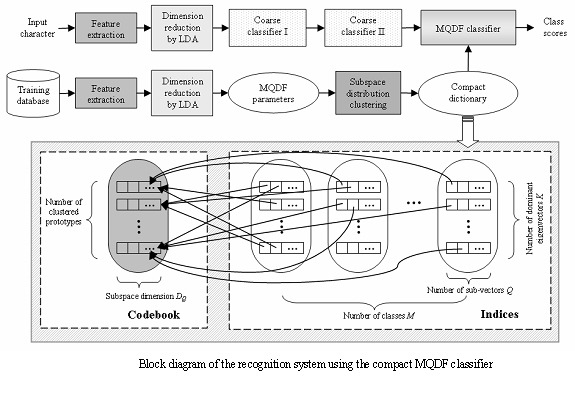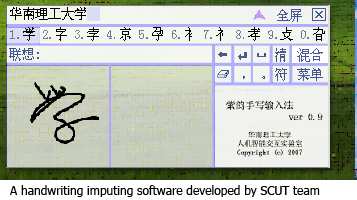Building Compact MQDF Classifier for Large Character Set Recognition by Subspace Distribution Sharing


The SCUT research team has proposed a method for building compact and high accuracy MQDF classifier. Quadratic classifier with modified quadratic discriminant function (MQDF) has been successfully applied to recognition of handwritten characters to achieve very high performance. However, for large category classification problem such as Chinese character recognition, the storage of the parameters for the MQDF classifier is usually too large to make it practical to be embedded in the memory limited hand-held devices. A method by combining linear discriminant analysis and subspace distribution sharing is proposed by SCUT team to greatly compress the storage of the MQDF classifier from 76.4MB to 2.06MB, while the recognition accuracy still remains above 97%, with only 0.88% accuracy loss. The block diagram of the proposed approach is shown in figure 1. The original parameter space is mapped into multiple subspaces by splitting the feature dimension. A uniform distribution for the subspaces is then found by the clustering process. By using a small set of prototypes clustered from the original subspaces to represent the uncompressed sub-vectors, the storage of the MQDF parameters is greatly compressed. By seeking for the optimal tradeoff curves between parameter size and recognition accuracy, some sets of parameter settings are discovered to form the optimal compact dictionary for MQDF parameters. To the best of our knowledge, no other research has attempted to solve the storage problem of the MQDF classifier for large scale character set recognition. The fast recognition speed (1.8ms/char for PC and 64ms/char for Pocket PC) and compact dictionary size (2.06MB) make the high accuracy MQDF classifier become practical for memory limited hand-held devices such as PDAs, mobile phones and Pocket PCs.
A paper that reports this research results has been accepted to apear in Pattern Recognition, a famous international jounal with SCI impact factor more than 2.0.